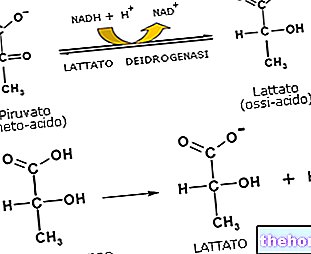Definition and types of resisting force
Resistant force is the body's ability to withstand a workload protracted over time.
Resistant force can be classified into:
- Resistance to quickness or speed, which lasts from 10 "to 35"
- Short lasting strength strength, lasting 35 "to 2"
- Medium-lasting strength strength, lasting from 2 "to 10"
- Long Lasting Resistant Strength:
- 1st type 10-35 "
- 2nd type 35-90 "
- 3rd type 90-360 "
- 4th type> 360 "
Resistant strength and metabolism
Not all types of resisting force require the same metabolic requirements; resistance to speed, for example, is the capacity that more than the others requires the maximization of anaerobic metabolism (alactacid and lactacid).

Resistant strength and functional anatomical components
The predisposing factors to resistant strength, which are therefore to be sought with training, are different; contrary to what one might think, many of them are typical of aerobic metabolism and their importance is related to the duration of the performance. the performance, the greater the influence of:
- Peripheral oxygen transport, muscle capillary bed and arteriovenous difference for oxygen
- Number and mass of mitochondria, and mitochondrial enzymatic activity
- Activity of the cardio respiratory system
- Energy oxidative capacity
Regardless of the duration of the exercise, the following are always fundamental:
- Amount of muscle myoglobin
- Type of muscle fibers
- Glycogen reserves
Particularly useful in the resisting force of LOWER duration are:
- Reserves of adenosine tri phosphate (ATP) and cratin phosphate (CP) in the muscles
- Activity of glycolytic enzymes
Resistant strength in sport
Given the wide temporal regime in which it is applied, resistant force is an intrinsic component of many sports: cycling and track cycling, speed and short middle distance running, rowing, canoeing, boxing and other combat sports, team sports. (basketball, soccer, american football, rugby) speed skating, skiing etc.
In short words:
- the resistant strength is useful for ALL sports that fully exploit the ANAEROBIC ALATTACID metabolism, the ANAEROBIC LACTACID metabolism and intensely the AEROBIC (especially GLYCOLYTIC) metabolism.
Resistant strength training
The most popular (and perhaps the most effective) method of resistant strength training is the circuit-training. This system exploits an intensity that varies from 30 to 60% of the maximum load, applied to 5-7 exercises to be repeated for 3-6 circuits; it can develop the resistant force in different ways by exploiting different variants:
- A rather difficult circuit training technique to manage (especially in young athletes) is the method of maximum number of repetitions; although elementary, it is based on the ability to reach one's limit in each series, therefore, it is a technique that is absolutely influenced by individual motivation. It provides for an "intensity of 30% (intended as a percentage of the ceiling) and must be repeated 5 times using gradually DECREASING recoveries but NOT less than 1".
- Especially useful in sports that involve important rhythm variations is the interval system (medium intensity); involves small series of high-intensity work followed by recovery proportionate and useful to repeat them 5-6 times (classic weight room method).
- Less intense, the continuous system; depending on the duration it can be short (15 "-2"), medium (2 "-8") or long (8 "-15"); it foresees the execution of 5-7 exercises for a relative number of series. NB. 5 exercises of 15 "can NEVER be repeated 3 times! In this case, a single series per exercise is sufficient.
Resistant strength and supplements
The supplements useful for improving resistant strength can be many, but this does not mean that they are significantly effective.
The alkalizing products against muscular acidosis (see what is expressed in the article anaerobic lactacid system) and the various forms of creatine (see anaerobic alactacid system) must be taken into consideration; obviously, in the case of long and very long duration of performance, energy supplements containing maltodextrin and a small dose of branched amino acids can be useful, better if reinforced with potassium and magnesium.
A separate speech should be made for stimulants; those notified, therefore legal in Italy (such as caffeine), proved to be useful in endurance disciplines but ineffective (contrary to expectations) on improving muscle contractility, therefore, even in this case it is recommended to use them only in the case in which the performance falls into the category of long-lasting resistant force, and more precisely in the 2nd, 3rd and 4th type.




























